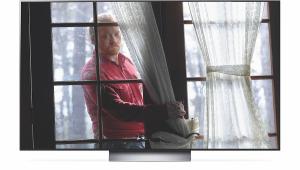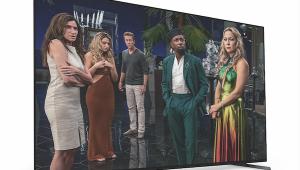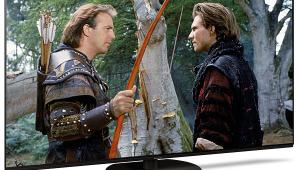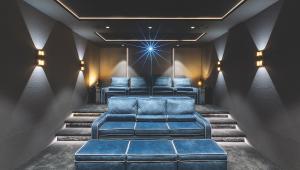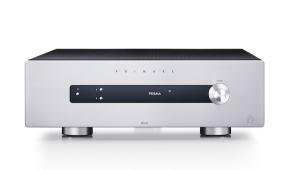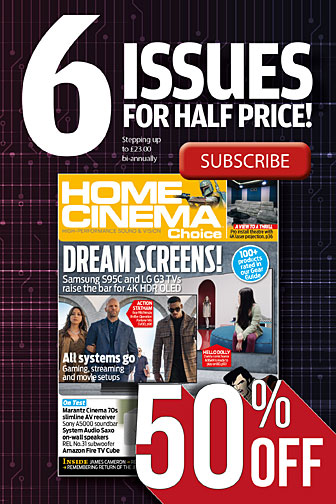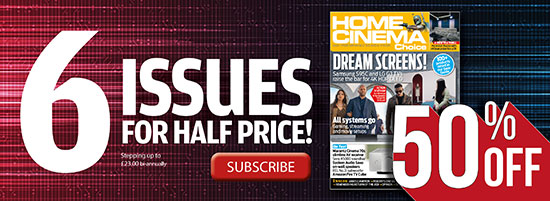Sony XR-65A80L OLED TV review

 Sony's first OLED TV of 2023 proves that you don't have to be spectacular to be beautiful, reckons John Archer
Sony's first OLED TV of 2023 proves that you don't have to be spectacular to be beautiful, reckons John ArcherWith excitement this year focused on the battle between second-gen Quantum Dot OLED technology, LG's new Micro Lens Array (MLA) technology, and the latest innovations in Mini LED displays, it can feel as if 'traditional' OLED TVs such as Sony's XR-65A80L are struggling to make their voices heard.
After all, here's an OLED telly that doesn't implement the new-fangled MLA technology, and Sony's second-generation Quantum Dot OLED screens will only arrive later this year in the form of its A95L series. In fact, the 65A80L – also sold under A83L and A84L variants at specific retailers – doesn't even pack a heat sink to help it deliver more brightness.
It does feature heat-mapping software to optimise how its OLED panel distributes power (and thus light), and my tests found the TV delivering around 10 per cent more light regards both peak brightness and fullscreen brightness than its A80K predecessor. But there's no getting around the fact that a measurement of just under 800 nits on a 10 per cent white HDR test window is only slightly more than half as measurably bright as the latest MLA-based LG G3 and QD OLED-based Samsung S95C models.
Of course, the 65A80L is more affordable than those flagship rivals, its £2,999 launch ticket bringing a saving of £500/£600 on the LG G3/Samsung S95C models respectively. While that's enough of a gap to put it into a whole different market, it's one that's still premium, so Sony specifies the 65A80L with the latest version of it Cognitive Processor XR – a chipset that's delivered such impressive results in previous iterations that it's clearly influenced the latest picture processing systems of most of its TV rivals – and its unique Acoustic Surface Audio innovation, where the TV's screen emits most of its sound.
Google-eyed
Smart features are supplied, as ever with Sony TVs, by the Google TV platform, supported by YouView to cover Google's blind spot with one or two UK terrestrial TV services. All the main streaming options are therefore covered, including BBC iPlayer, Apple TV, Prime Video, Netflix and Disney+, with the latter app finally supporting Dolby Atmos sound through Google TV. Sony's own Bravia Core streaming service, which offers far higher bitrates than other SVOD platforms, is also present and correct, and comes with 10 free 'premium' movie downloads.
The 65A80L is also certified IMAX Enhanced, adding to its support for Dolby Vision HDR alongside the vanilla HDR10 and HLG high dynamic range formats. For me, then, the main disappointment with this TV's features and specifications isn't the conventional OLED panel configuration, but the absence of HDR10+ playback, and a slightly limited HDMI stage. Only two of the 65A80L's four HDMI ports carry 4K/120Hz and VRR feeds from PS5, Xbox Series X and PC hardware, and you can't have both Dolby Vision and 4K/120Hz simultaneously through even the two high-capacity HDMIs, either.
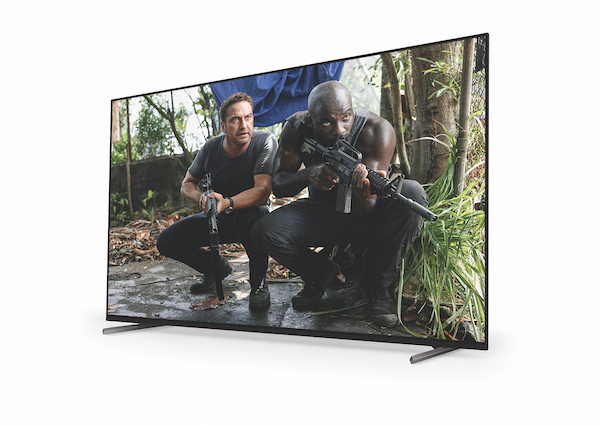
Aesthetically, this new Sony flatscreen differs little from the 2022 model it's replaced, with an elegant, ultra-minimalist design that finds its screen surrounded by the bare minimum of bezel and reinforced by a rear panel that's so slim at its edges that the set appears to be wafer thin unless you're looking at it from a right angle. Its two 'blade' feet are also so narrow that you can barely see them when viewing the TV straight on, enhancing this 'pictures out of thin air' feel. These feet can be installed so that the screen sits right down on top of them (pictured right), or they can be set to raise the screen a few centimetres higher, providing room below to accommodate a soundbar.
Talking of which, Sony's Acoustic Center Sync feature enables the TV's integrated five-driver sound system (three actuators and two bass drivers) to join forces with the brand's soundbars to create a bigger, more detailed and more compelling centre channel. This will be a no-brainer for owners of both TV and 'bar, but in its standalone guise the 65A80L is no slouch either; the Acoustic Surface system propels sound forward so that it's a more direct and engaging listen than from a TV that places its speakers behind the screen. Effects are matched to the correct part of the picture, and there's a generally impressive level of clarity and detail. In a perfect world the two bass units would contribute more low-frequency heft, but at least they accept their limitations rather than pushing unconvincingly beyond them.
The XR factor
Sony doesn't claim to have delivered many major enhancements to its tried-and-tested Cognitive Processor XR image management system, bar a new XR Clear Image tool for enhanced upscaling of sub-4K sources. That's no biggie, though, as the continuing XR OLED Contrast Pro, XR Triluminos Pro (for enhanced colour) and XR OLED Motion systems, together with the processor's over-riding desire to give images a 'real world' sense of depth and local emphasis, combine with the new panel design to sublime effect. Its images don't look as instantly spectacular as those of much brighter rivals, but it doesn't take long to realise that the performance is still spectacular in its own deeply refined way.
The Ultra HD Blu-ray release of Marvel sequel Ant-Man and The Wasp: Quantumania (US import) feels as if it's being rendered with a class-leading level of care and contextual awareness. Flawless colour blends and very subtle tonal shifts are complemented by an uncanny understanding of the relative importance of different objects, resulting in even complex images – such as the busy, bizarre landscapes and creatures of the movie's Quantum Realm setting – having an irresistibly immersive sense of realism, depth and purity.
Quantum mechanics
The precision in the 65A80L's pictures continues with its light management. At the extremes, the brightest spots in the almost psychedelic Quantum Realm stand out against the rest of the image more boldly than you'd expect based upon the screen's measured brightness – a result of Sony's outstanding HDR tone mapping. Meanwhile, the darkest black areas of the Quantum Realm are rendered immaculately, without a hint of greyness or inconsistency.
It's actually in the TV's ability to accurately judge light levels for every pixel between its extremes where its true genius lies. You can see this during ...Quantumania's opening scene, as the screen depicts every last little blend and tone in the dark, textured backdrop to Janet's first meeting with Kang. This sequence also shows the 65A80L handling near-black image content with noiseless ease, and the value of its outstanding light control when it comes to adding just the right amount of 'volume' (within its brightness limits) to every colour tone.
This focus on precision carries into how sharp and detailed the TV's pictures appear. ...Quantumania is a reasonably detailed-looking title by Disney 4K BD standards, and Sony's OLED does full justice to the disc's efforts. In fact, the Cognitive Processor XR silicon makes the transfer look even better than it actually is.
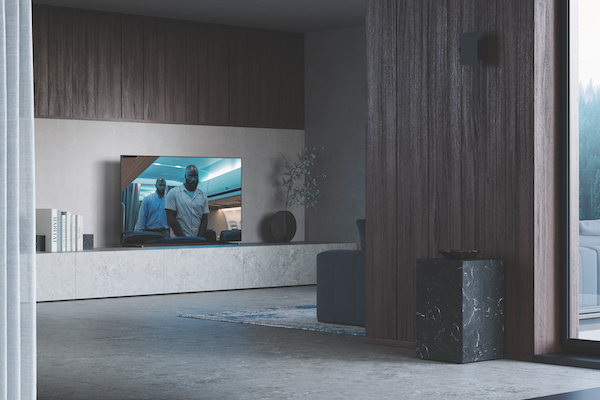
Swap 4K for Blu-ray or HD streams and the 65A80L can deliver some of the most natural and finessed upscaled pictures around. This is a processing skill that's as welcome as the TV's immaculate True Cinema motion mode, which manages to massage away the slightly 'hard' judder that OLED TVs can present in their native state, without generating either the over-smooth 'soap opera effect' or distracting side effects.
Max aggression
At this point I'm duty-bound to stress again that however nuanced and natural they might be, the 65A80L's images clearly aren't as punchy as those of the more expensive new OLED TV technologies that have emerged this year. This is noticeable with aggressive HDR transfers such as the 4K Blu-rays of Mad Max: Fury Road and Pan, where Sony's focus on subtlety and detail sees the TV setting a quite limited average brightness level in order to retain as much detail as it can in even the brightest parts of these challenging sources.
While this proves surprisingly untroublesome in a darkened room, it does become more of an issue in bright environments. I momentarily thought Sony had provided a good solution with the 65A80L's Vivid picture preset, which massively increases both colour and brightness (it actually hits more than 1,100 nits on a 10 per cent window in very short bursts). Unfortunately, however, this mode can suffer with excessive colour noise and a weird blue pixellation over parts of the picture that should be white, making it a non-starter, really. It's totally at odds with everything the TV does so majestically in its other presets, making this model one that's much better suited to lights-down viewing.
Regardless of the environment, the set's pictures suffer no colour shift or dimming when viewed even from almost right angles, and while there are a couple of niggly limitations with its gaming features, its gaming visuals are actually as beautiful and immersive in a dark room setting as its video pictures. And if you're using a PS5 you can take advantage of the auto HDR tone mapping feature that Bravia TVs enjoy with Sony's latest console.
Stunning option
It's inevitable that the 65A80L won't get as much in-store attention as it might if it hadn't come out in a year set to be dominated by new TV technologies. But this doesn't mean that it's not still a stunning option by the standards of the more affordable OLED mid-range market, especially for anyone who values 'home cinema' over just watching TV. There's plenty of life in 'traditional' OLED yet...
HCC Verdict: 5/5
Sony XR-65A80L
Price: £2,999
www.sony.co.uk
We say: While the 65A80L isn't as bright as this year's more expensive 'hero' OLED TVs, its stellar attention to detail and nuance make it a hero all the same.While the 65A80L isn't as bright as this year's more expensive 'hero' OLED TVs, its stellar attention to detail and nuance make it a hero all the same.
Specifications
4K: Yes. 3,840 x 2,160 HDR: Dolby Vision; HLG; HDR10 TUNER: Yes. Freeview HD; satellite HD CONNECTIONS:: 4 x HDMI; optical digital audio output; 2 x USB; centre speaker/composite video hybrid input 4K/120 PLAYBACK: Yes SOUND (CLAIMED): 50W (5 x 10W) BRIGHTNESS (CLAIMED): N/A Contrast: N/A DIMENSIONS (OFF STAND): 1,448(w) x 836(h) x 53(d)mm WEIGHT (OFF STAND): 23.3kg
FEATURES:Cognitive Processor XR engine; Chromecast; Google Assistant voice control; Centre Channel Sync with Sony soundbars; eARC; Acoustic Surface Audio+ sound system; Dolby Atmos decoding; optional Bravia Cam; Auto Calibration with Calman support; Apple Airplay and Homekit support; IMAX Enhanced; Bravia Core
 |
Home Cinema Choice #351 is on sale now, featuring: Samsung S95D flagship OLED TV; Ascendo loudspeakers; Pioneer VSA-LX805 AV receiver; UST projector roundup; 2024’s summer movies; Conan 4K; and more
|








